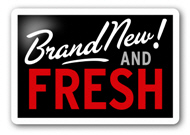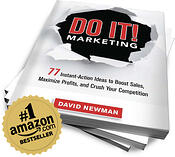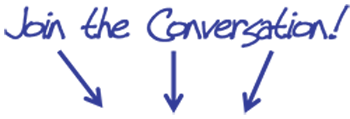 I’ve quit.
I’ve quit.
Yup - done, finished, over.
“Quit what?” you ask?
I’ve quit blogging.
OK, that’s not quite true...
But I’ve quit blogging daily.
It was an experiment.
And it worked.
And it didn’t.
Here’s the deal - for most of last year, this website averaged between 5,000-6,000 visits per month. Not great, but not terrible either.
At the beginning of this year, I committed to an experiment - namely blogging every weekday.
Yup, 5 posts a week. Week in and week out. I stuck to the schedule and didn’t miss a day in 26 weeks. 6 full months.
The result?
It worked great.
Almost immediately (OK, it took 8 weeks, but that’s close enough) my web traffic went from an average of 5,000-6,000 visits up to an average of 10,000-11,000 visits. One month, we even generated 15,000 visits - triple the old number. I'll explain that "we" later in this post...
My opt-in rate doubled (for everything - my free ebook, blog subscriptions, my free teleseminars.)
My SEO went up - I moved from page 2 and page 3 of Google results for certain keywords to page 1.
The second result?
I found out what really worked to drive more traffic, more leads, and more business.
And it wasn’t the blog...
It was three things:
1. My new book. Specifically, the marketing plan for my book, which turned out to also become the marketing plan for the website and the marketing plan for my speaking and mentoring programs. Woo hoo - who'd a thunk it?
Lesson: If you “lean in” and commit to the marketing for ONE flagship product, service, or program like I did with my book - you will start to generate momentum that carries over into everything else that you are doing.
2. Email marketing. Plain and simple, the more marketing emails I sent, the more web visits I got. Accident? No, of course not. Most of my emails contained links back to the website for the latest blog posts, the occasional teleseminar invitation or a new program announcement.
Lesson: The more email you send that contains high-value content, advice, insights, and recommendations (aka email that’s too good to delete), the more stickiness you’ll generate for your fans and followers.
3. FLOP - Namely, “Featuring and Leveraging Other People.” I wrote about this concept in detail here and it has also been a tremendous driver of new traffic and new friendships, new clients, and new projects. Inbound FLOP is me shining the spotlight on others. And outbound FLOP is me participating in other people’s book launches, surveys, guest blogging, and so on.
Lesson: It’s not all about YOU. It IS all about how YOU can serve and promote other experts in your field who have a complementary skill set, message, or service offering. Welcome to the new collaborative economy. They win when you win. And you win when they win.
Sooooo... I’m still blogging.
But I’ve scaled down to once or twice a week.
And I’ve scaled UP the other activities listed above.
Because that’s what generates results.
What have YOU changed up in the last 3-6 months to STOP doing what doesn't matter and start DOING more of what matters most? Please use the COMMENTS area below to share your specific changes and how they've freed up more time or made you more money...

 Grab your FREE copy of the Ultimate Resource List!
Grab your FREE copy of the Ultimate Resource List!
Are you a DO IT freak? Welcome to the club!! Please use the social media buttons at the top of this post to share it with your network. YOU are a rock star!
 My friend, Avish Parashar, just launched his "Speaking Expert" podcast and I was honored to be his first guest.
My friend, Avish Parashar, just launched his "Speaking Expert" podcast and I was honored to be his first guest.  p.s. We still have a few open seats for the Simple Marketing Success 10-Week Virtual Bootcamp experience that starts October 8, 2013. Let me know you're interested (email or call me 610.716.5984) and I'll forward you the application materials right away.
p.s. We still have a few open seats for the Simple Marketing Success 10-Week Virtual Bootcamp experience that starts October 8, 2013. Let me know you're interested (email or call me 610.716.5984) and I'll forward you the application materials right away. 

 Build the Tribe Before the Tent
Build the Tribe Before the Tent This is a much larger conversation
This is a much larger conversation
 There are only three problems that you, as a small business owner, entrepreneur or professional service provider, are ever going to be in a position to solve.
There are only three problems that you, as a small business owner, entrepreneur or professional service provider, are ever going to be in a position to solve.
 Disclosure: I never badmouth anyone in public. EVER. Even if they deeply and richly deserve it. And I’m not about to start now, even though this story may send chills down your spine. All names have been removed to protect the goofy.
Disclosure: I never badmouth anyone in public. EVER. Even if they deeply and richly deserve it. And I’m not about to start now, even though this story may send chills down your spine. All names have been removed to protect the goofy. Many of my marketing mentor clients want to boost their online presence - in the words of my pal Henry DeVries, they want “more blogs, more buzz, and more business.”
Many of my marketing mentor clients want to boost their online presence - in the words of my pal Henry DeVries, they want “more blogs, more buzz, and more business.”
 I’ve quit.
I’ve quit.

 Jay Baer’s Bio:
Jay Baer’s Bio: 

